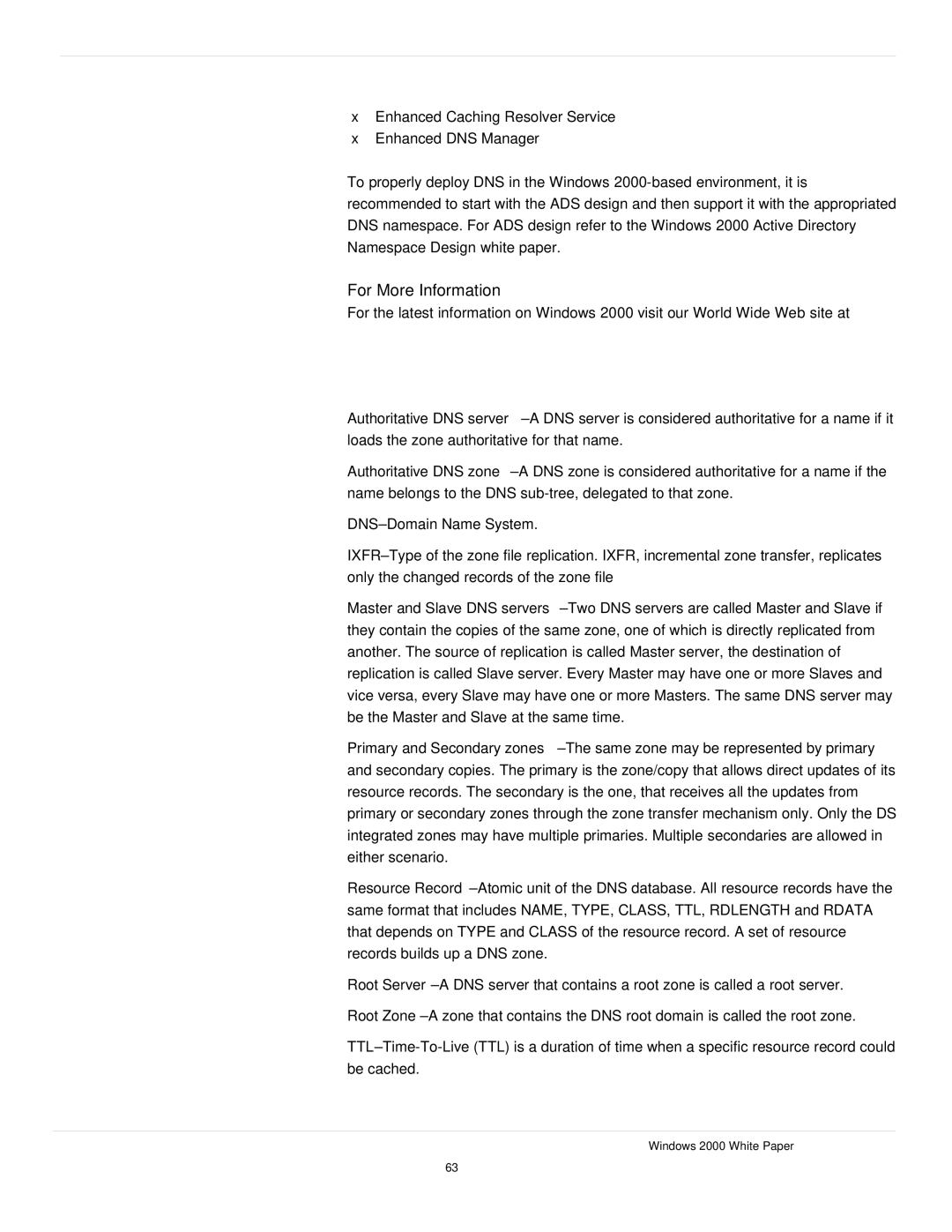•Enhanced Caching Resolver Service
•Enhanced DNS Manager
To properly deploy DNS in the Windows 2000-based environment, it is recommended to start with the ADS design and then support it with the appropriated DNS namespace. For ADS design refer to the Windows 2000 Active Directory Namespace Design white paper.
For More Information
For the latest information on Windows 2000 visit our World Wide Web site at http://www.microsoft.com/windows2000
AXFR–Type of zone file replication. AXFR replicates the entire zone. (See also
IXFR.)
Authoritative DNS server–A DNS server is considered authoritative for a name if it loads the zone authoritative for that name.
Authoritative DNS zone–A DNS zone is considered authoritative for a name if the name belongs to the DNS sub-tree, delegated to that zone.
DNS–Domain Name System.
IXFR–Type of the zone file replication. IXFR, incremental zone transfer, replicates only the changed records of the zone file
Master and Slave DNS servers–Two DNS servers are called Master and Slave if they contain the copies of the same zone, one of which is directly replicated from another. The source of replication is called Master server, the destination of replication is called Slave server. Every Master may have one or more Slaves and vice versa, every Slave may have one or more Masters. The same DNS server may be the Master and Slave at the same time.
Primary and Secondary zones–The same zone may be represented by primary and secondary copies. The primary is the zone/copy that allows direct updates of its resource records. The secondary is the one, that receives all the updates from primary or secondary zones through the zone transfer mechanism only. Only the DS integrated zones may have multiple primaries. Multiple secondaries are allowed in either scenario.
Resource Record–Atomic unit of the DNS database. All resource records have the same format that includes NAME, TYPE, CLASS, TTL, RDLENGTH and RDATA that depends on TYPE and CLASS of the resource record. A set of resource records builds up a DNS zone.
Root Server–A DNS server that contains a root zone is called a root server.
Root Zone–A zone that contains the DNS root domain is called the root zone.
TTL–Time-To-Live (TTL) is a duration of time when a specific resource record could be cached.
Windows 2000 White Paper

